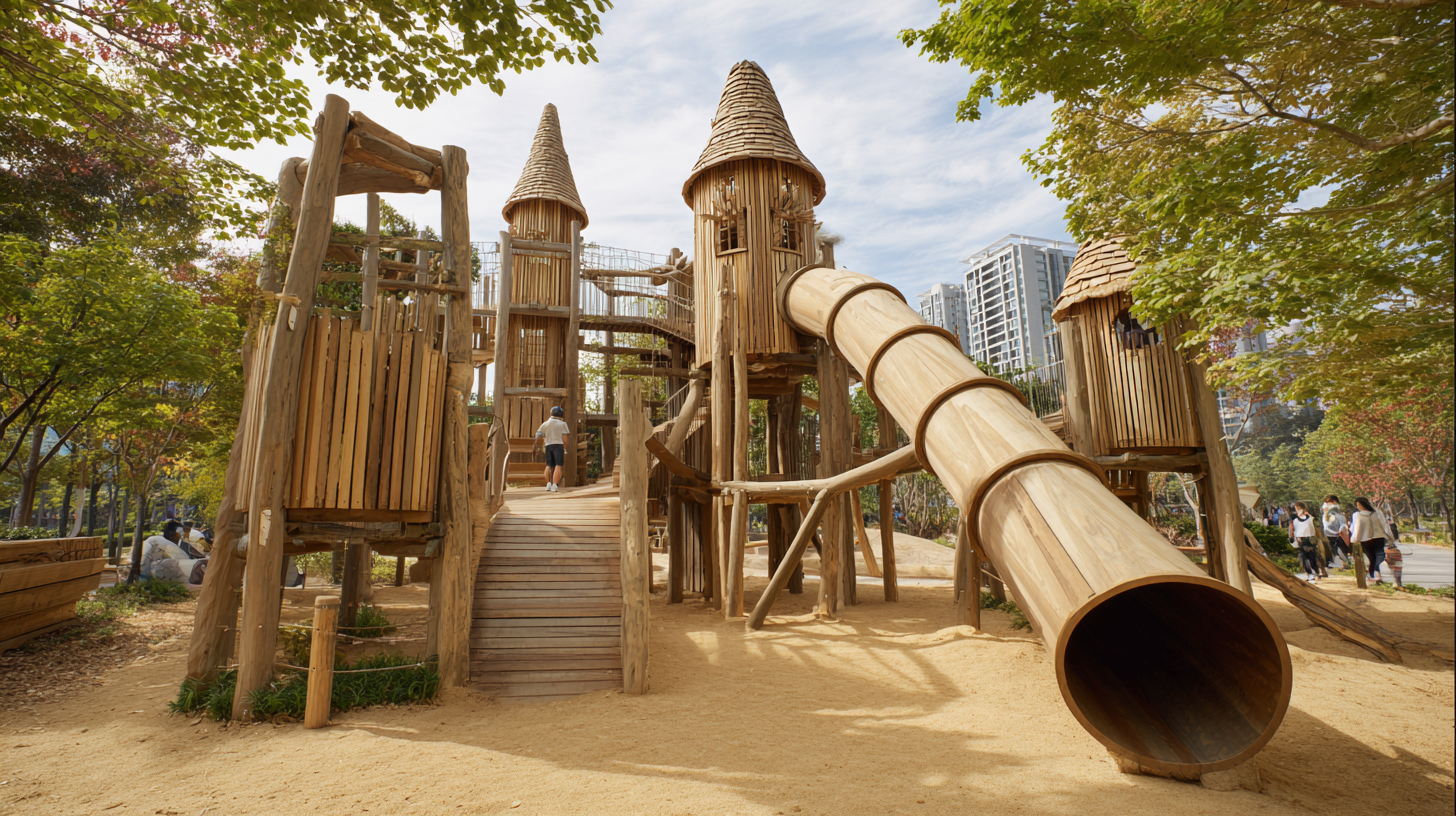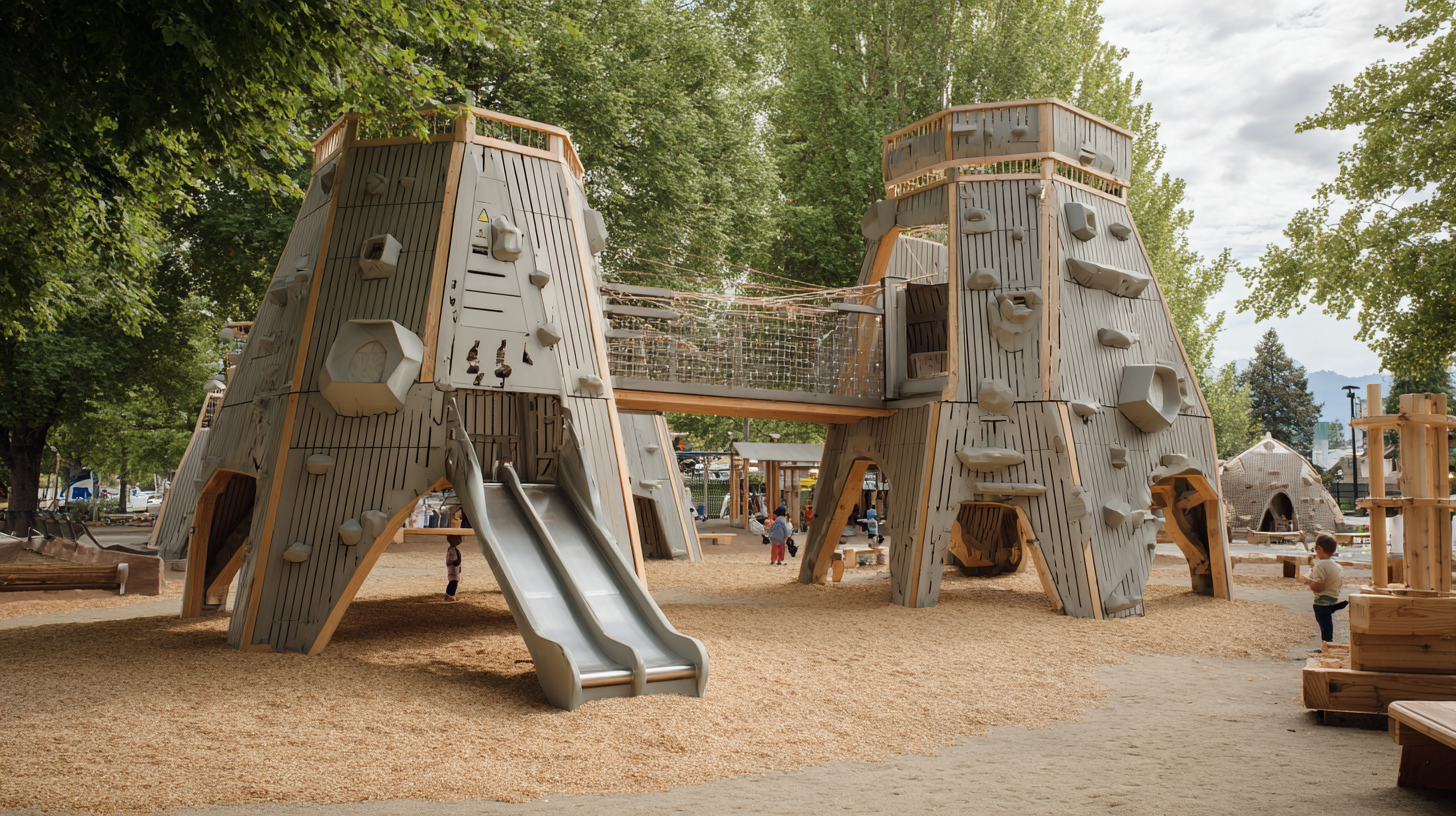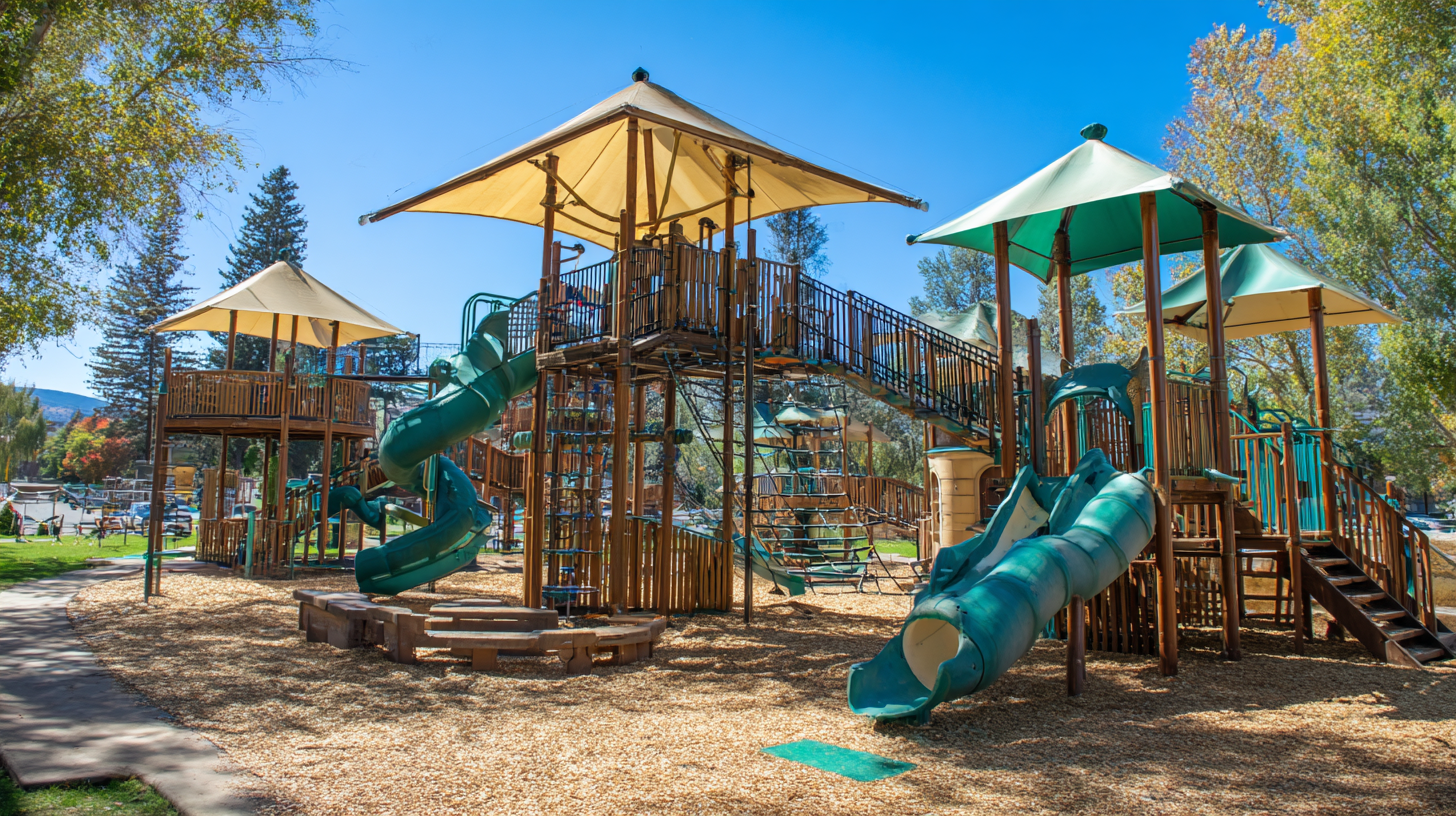 +86-13901441113
+86-13901441113




As we look ahead to 2025, the landscape of the outdoor toy market, particularly Outdoor Playground Toys, is poised for transformative growth driven by emerging technological trends. According to a report from MarketsandMarkets, the global outdoor toys market is projected to reach USD 28.6 billion by 2025, reflecting a compound annual growth rate (CAGR) of over 6%. This surge is largely influenced by increasing awareness of the benefits of outdoor play, fostering physical health and social interaction among children. Moreover, with the integration of digital technology, innovative designs, and sustainable materials, the next generation of outdoor playground toys is expected to engage children in new, immersive ways. Understanding these trends will be crucial for manufacturers, educators, and parents alike as they navigate a market evolving to meet the needs of modern play.

 As we look towards 2025, the outdoor playground toy industry is undergoing a significant transformation, primarily driven by the rise of eco-friendly materials. Parents and educators are increasingly conscious of the environmental impacts of traditional plastic toys, leading to a demand for sustainable alternatives. Eco-friendly materials, such as bamboo, recycled plastics, and natural rubber, are becoming popular choices in the production of playground equipment, ensuring that children can play in a safe and environmentally responsible manner.
As we look towards 2025, the outdoor playground toy industry is undergoing a significant transformation, primarily driven by the rise of eco-friendly materials. Parents and educators are increasingly conscious of the environmental impacts of traditional plastic toys, leading to a demand for sustainable alternatives. Eco-friendly materials, such as bamboo, recycled plastics, and natural rubber, are becoming popular choices in the production of playground equipment, ensuring that children can play in a safe and environmentally responsible manner.
Incorporating these sustainable materials not only reduces the carbon footprint of playground manufacturing but also enhances the durability and safety of the toys. For instance, many manufacturers are now using non-toxic paints and finishes, ensuring that children are protected from harmful chemicals. This shift towards greener options is not just a trend; it's a commitment to providing a healthier playing environment for children and promoting sustainability from a young age. As companies continue to innovate, we can expect a new wave of outdoor playground toys that are both fun and environmentally friendly, setting a standard for future generations.
The landscape of outdoor playground toys is undergoing a transformative shift, greatly influenced by innovative technologies that are revolutionizing safety standards. Recent studies indicate that as much as 80% of parents prioritize safety features when selecting play equipment for their children. This statistic highlights the growing demand for products that not only entertain but also protect against potential hazards. In response, companies are now integrating advanced materials and smart technology into their designs, ensuring that playgrounds meet the highest safety criteria.
For instance, data sensors embedded in play equipment are becoming increasingly common, providing real-time monitoring of usage patterns and stress levels on materials. This technology not only keeps children safe but also aids in proactive maintenance, significantly reducing accidents. Furthermore, safety frameworks similar to those adopted in the automotive industry are being considered for playground environments, promoting a culture of safety and accountability among manufacturers. With an increasing focus on sustainability, many leading brands are adopting reclaimed materials, further enhancing safety while supporting environmental initiatives. The convergence of technology and safety standards in playground design underscores a pivotal shift towards creating secure and enjoyable play spaces for children.
| Feature | Description | Impact on Safety | Technological Innovation |
|---|---|---|---|
| Smart Sensors | Sensors that monitor user activity and detect potential hazards | Enhances real-time awareness of safety risks | IoT integration for real-time data |
| Augmented Reality (AR) | Interactive play experiences using AR technology | Encourages safe play through guided interactions | Enhanced digital landscapes for outdoor play |
| Biomaterials | Sustainable materials that are safe for children and the environment | Reduces chemical risks associated with traditional materials | Innovative manufacturing practices |
| Remote Monitoring | Ability to monitor playground equipment conditions remotely | Proactive maintenance reduces accidents | Cloud-based management systems |
| Adaptive Play Equipment | Equipment that adjusts to children's varying abilities | Increases inclusivity and safety for all users | User-centered design innovations |
The future of outdoor playground toys is being transformed by innovative trends that merge interactive elements with educational opportunities. Smart playgrounds are emerging as a central theme in 2025, integrating technology that engages children while promoting learning. These attractions are designed to stimulate creativity and critical thinking, combining fun with intellectual growth. For instance, augmented reality features can turn a simple play structure into an immersive learning experience, encouraging children to explore the world of science and nature in a playful manner.

When considering the latest technologies for your outdoor playground, it’s essential to choose toys that foster interaction among children. Look for equipment that promotes teamwork and social skills through collaborative games and challenges. This not only makes playtime enjoyable but also helps children develop essential life skills. Additionally, ensure the toys are adaptable to various age groups, allowing for inclusive play experiences.
Another key aspect is safety, especially as more smart technologies are involved. Invest in high-quality materials and regular maintenance for playground equipment, and consider features such as soft landings or interactive sensors that enhance the play experience without compromising safety. Balancing fun with safety and learning will create a playground that truly caters to the needs of modern children.
The evolution of outdoor playground toys in 2025 is profoundly influenced by the growing recognition of social play’s importance in child development. According to the latest report from the International Playground Manufacturers Association, over 70% of parents believe that social interaction during playtime fosters essential life skills such as cooperation and empathy. This perspective is driving designers to create toys that not only entertain but also facilitate collaborative experiences among children.
In response to this demand, playground equipment manufacturers are increasingly implementing features that encourage group play. A recent study by the American Academy of Pediatrics highlights that children who engage in social play are 40% more likely to demonstrate effective problem-solving skills and emotional intelligence. As a result, toys that incorporate modular designs or multifunctional elements are becoming the norm, allowing children to connect and engage with one another.
The focus on social play is not just about the toys themselves; it also extends to creating inclusive and adaptable play environments that cater to diverse groups, ensuring that all children can participate in shared experiences.
As we look ahead to 2025, the landscape of outdoor playground toys is heavily influenced by emerging designs that prioritize customization and inclusivity. Modern play areas are being transformed to accommodate kids of all abilities and interests, fostering a sense of belonging and encouraging creativity. Customizable play structures allow for unique configurations, enabling children to engage in imaginative play that reflects their personal tastes and preferences.
Tip: When designing or selecting playground equipment, consider modular systems that allow for easy adjustment and reconfiguration. This adaptability not only enhances playtime experiences but also promotes collaborative play among diverse groups of children.
Inclusivity in outdoor play spaces means more than just accessible equipment; it requires a thoughtful design approach that takes into account sensory experiences, varied heights, and differing skill levels. Features such as tactile panels and sound installations provide sensory-rich experiences, while tiered climbing options ensure that every child can participate, regardless of physical limitations.
Tip: Collaborate with local communities and parents when planning playgrounds. Their insights can help create a more inclusive space that addresses the specific needs and desires of the children who will use it.